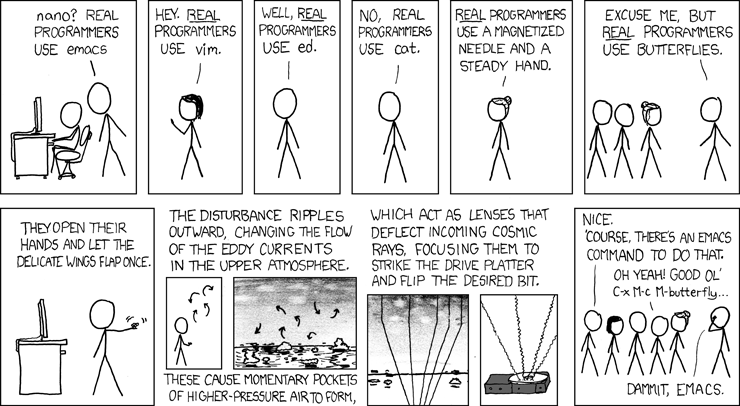Notes about how I am internalizing VIM key bindings ☕
Wed, May 12th, 2022
To my future self:
My learning process using VIM key bindings was stuck on move commands; even though I realized the power of moving freely and accurately around the editor, I haven’t a reason to waste my life with key bindings. This post is a never-ending excuse to continue developing my VIM workflow. If I am reading this now, I am sure I forgot something.
Repeating a char or a seq of chars n times
Sequence: ESC-n-i-char/seq-ESC-ESC
n: number of timesi: insert modechar/seq: char or sequence of chars
Usage: Create a header for a file or when I need to repeat an arbitrary sequence of characters.
Basic replacing in the current line :s or in all llines :%s
Sequence: :s/this/for that/g or :%s/this/for that/g
:s: is short for “substitute” on the current line:%s: is short for “substitute” on the whole documentthis: is the pattern you want to replacefor that: you want insteadg: is short for “global” and refers to replacing more than the first occurrence
Usage: guess what!
Change upper-to-lower case and viceversa
Sequence: guu (upper-to-lower) or gUU (lower-to-upper) the current line
U: Change lower-to-upper caseu: Change upper-to-lower case- VIM selection + {
uorU}: change the selection givenuorUbehavior
That’s the way computer talks to each other.
